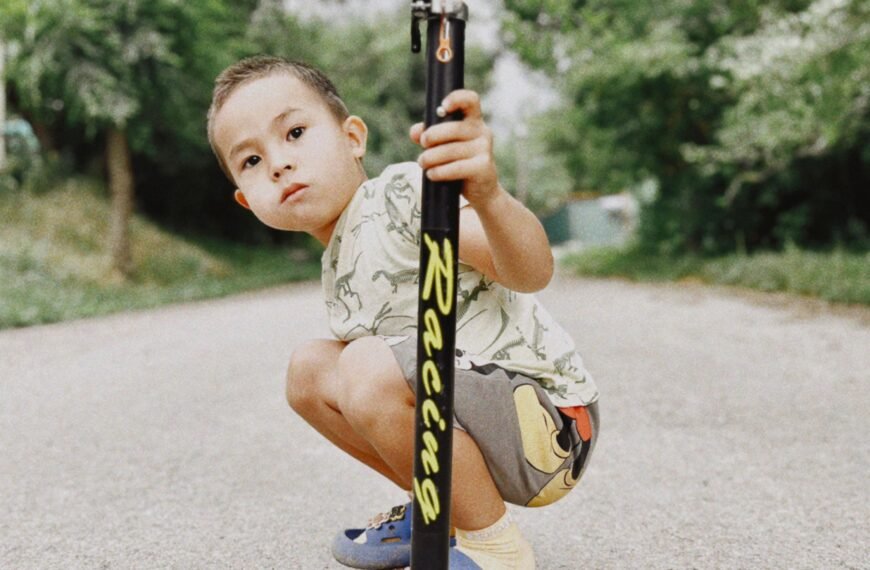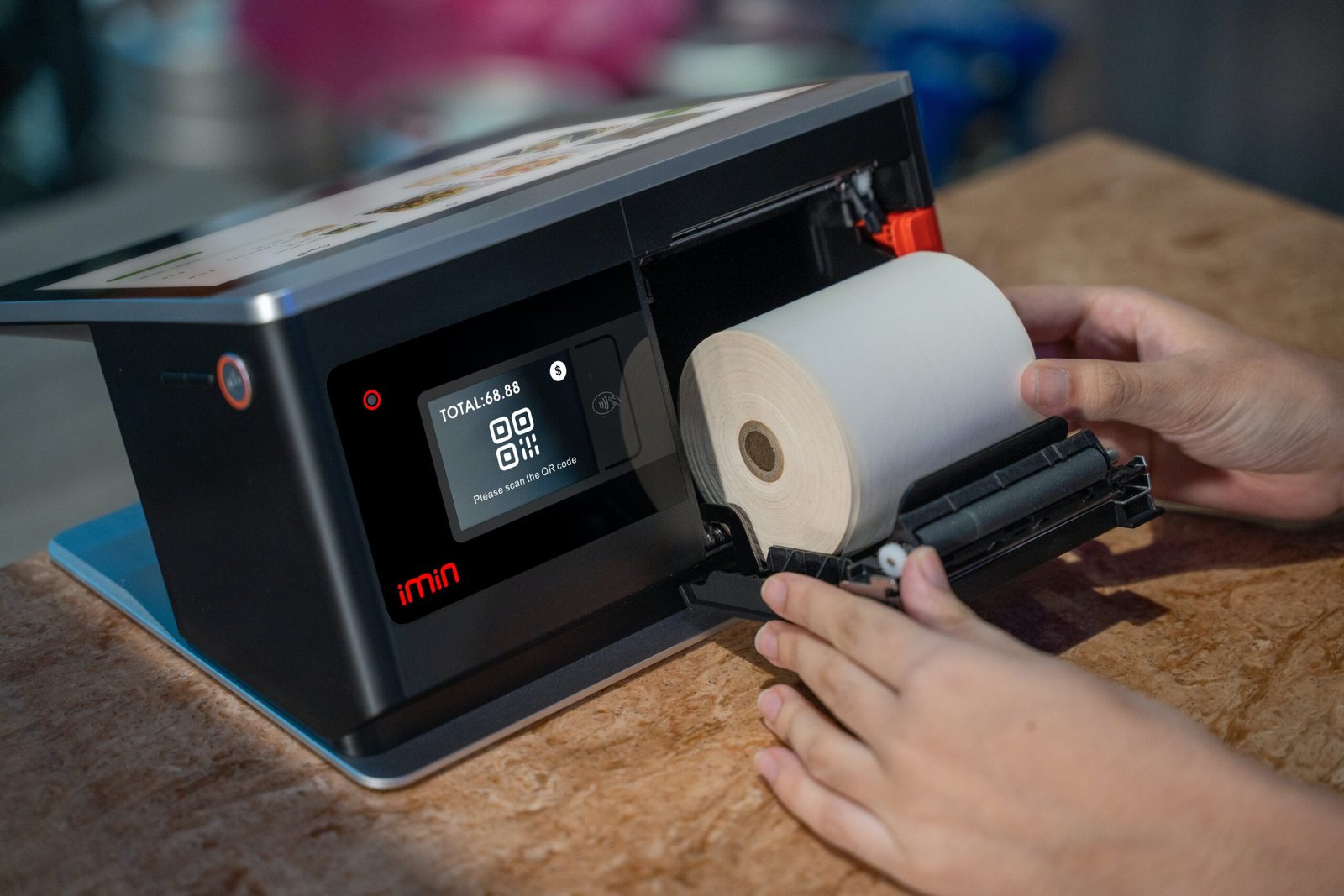Have you ever wondered when your little one will start playing with toys? It’s an exciting milestone in their development, as toys play a crucial role in their cognitive and physical growth. From grasping and exploring to imaginative play, the journey of toy engagement is an important part of their early years. In this article, we’ll explore the different stages of when babies start playing with toys and the fascinating ways it shapes their development. So, get ready to witness the joy and wonder that comes with your baby’s newfound fascination with toys.

Check Baby Toys Guide & Review
Developmental Milestones
Fine Motor Skills
Fine motor skills refer to the development of small muscle movements in the hands and fingers. During the first few months, babies start to develop their ability to grasp and hold objects. By 3-6 months, they can reach out and grab toys and may begin to pass objects from one hand to another. Between 6-9 months, they can start to manipulate toys with more precision, like shaking a rattle or banging two blocks together. By 9-12 months, they can pick up small objects with their fingertips, and they may even be able to hold a spoon or crayon. As they reach 12-18 months, they can stack blocks, turn pages in a book, and scribble using a crayon. By 18-24 months and beyond, their fine motor skills continue to develop, enabling them to engage in more complex activities like using scissors or building with small construction toys.
Gross Motor Skills
Gross motor skills involve the development of larger muscle movements and coordination. In the early months, babies gradually gain control over their head and neck muscles, allowing them to lift and turn their heads. Between 3-6 months, they can start to support themselves on their arms during tummy time and may even roll over. By 6-9 months, they can sit up without support and may begin crawling or scooting on their bellies. As they approach 9-12 months, they start to pull themselves up to a standing position and may start cruising along furniture. Between 12-18 months, they can take their first steps and may begin walking independently. By 18-24 months and beyond, they can run, jump, climb, and even ride a tricycle.
Cognitive Development
Cognitive development relates to a baby’s ability to think, understand, and process information. During the first few months, babies start to develop their senses and become more aware of their environment. They can focus on and track objects with their eyes and respond to sounds and voices. Between 3-6 months, they begin to recognize familiar faces and objects, and their senses continue to sharpen. By 6-9 months, they become more curious and start exploring objects and their properties. They learn cause and effect by banging or shaking toys and develop object permanence, understanding that objects exist even when they are out of sight. Between 9-12 months, they start to imitate actions and gestures, respond to simple instructions, and show an understanding of simple concepts like “more” or “all gone.” As they reach 12-18 months and beyond, their cognitive abilities continue to expand, and they can solve simple puzzles, sort shapes and colors, and engage in pretend play.
Age Range
0-3 Months
During the first few months, a baby’s play mainly revolves around exploring their senses. They are fascinated by black and white toys, as these high-contrast patterns capture their attention. Noise-making toys, such as rattles or musical mobiles, help stimulate their auditory development. Texture toys with various fabrics or materials can provide tactile stimulation, while soft grasping toys are ideal for their developing fine motor skills.
3-6 Months
As babies grow and gain more control over their bodies, they become more interactive with toys. They will enjoy grasping toys that are easy to hold, such as rings or textured balls. Stacking toys with large, colorful pieces can also be engaging, as they can practice their hand-eye coordination by trying to stack the pieces. Toys that make different sounds, like squeaky toys, can also entertain them.
6-9 Months
Between 6-9 months, babies become more mobile, either through crawling or rolling. They start to show an interest in exploring their surroundings more actively. Activity centers with various manipulative features, such as buttons to push or levers to pull, can keep them engaged and promote their cognitive and motor skills. Grasping toys that encourage them to use both hands simultaneously are also beneficial at this stage.
9-12 Months
From 9-12 months, babies become more independent and begin to refine their motor skills. They enjoy toys that challenge their problem-solving abilities, such as shape sorters or simple puzzles. Activity tables or centers with interactive elements, like buttons to push or doors to open, can also capture their attention. As their physical abilities progress, ride-on toys or push toys can provide them with opportunities to practice their gross motor skills.
12-18 Months
Between 12-18 months, toddlers continue to refine their motor skills and become more imaginative in their play. Dolls and action figures can encourage pretend play, allowing them to enact daily routines or imitate interactions with caregivers. Musical toys, like toy keyboards or drums, can help them explore rhythm and cause-and-effect relationships.
18-24 Months
By 18-24 months, toddlers are more mobile and active. They enjoy toys that challenge their problem-solving skills, such as simple puzzles or shape sorters with smaller, more complex pieces. They may also show an interest in building and construction toys, like blocks or stacking cups. Art supplies, such as crayons or finger paints, can stimulate their creativity and fine motor skills.
2 Years and Older
As children reach their second year and beyond, their play becomes more complex and imaginative. They may enjoy pretend play with playsets, such as kitchen or doctor sets, allowing them to imitate adult roles and explore their creativity. Building blocks and construction toys become increasingly popular, as they can build more elaborate structures. Musical instruments and art supplies continue to foster their creativity and self-expression.
Types of Toys
Black and White Toys
Black and white toys, with high-contrast patterns, are particularly stimulating for newborns as they are attracted to these bold visual elements. They can help babies focus their attention and develop their visual tracking skills.
Noise-Making Toys
Toys that produce sounds, such as rattles or musical toys, can captivate a baby’s attention and enhance their auditory development. The different noises can also spark curiosity and exploration.
Texture Toys
Texture toys with various fabrics or materials offer tactile stimulation for babies. They can explore different textures through touch and develop their sensory awareness.
Grasping Toys
Grasping toys, with easy-to-grip handles or features, are ideal for babies who are beginning to develop their fine motor skills. These toys encourage them to practice their hand-eye coordination and strengthen their finger muscles.
Stacking Toys
Stacking toys with large, colorful pieces promote hand-eye coordination, spatial awareness, and problem-solving skills. Babies can experiment with different ways to stack and balance the pieces, developing their cognitive and motor abilities.
Shape Sorters
Shape sorters challenge babies to match shapes to corresponding holes. This toy helps develop their problem-solving abilities, fine motor skills, and understanding of shapes and spatial relationships.
Puzzles
Puzzles, with age-appropriate complexity, encourage cognitive development and problem-solving skills. They provide a challenge for toddlers to manipulate and fit puzzle pieces together, promoting spatial awareness and logical thinking.
Activity Centers
Activity centers are interactive toys with various buttons, switches, and manipulative features that engage children’s senses and enhance their cognitive and motor abilities. These centers often have multiple activities, allowing babies to explore and experiment.
Dolls and Action Figures
Dolls and action figures promote imaginative play and encourage children to imitate real-life situations and interactions. They can foster a sense of empathy and social skills as children engage in nurturing or role-playing activities.
Musical Toys
Musical toys, such as toy keyboards, drums, or xylophones, introduce children to rhythm, sound, and cause-and-effect relationships. They can explore their musical abilities and improve their coordination by playing different notes or beats.
Stages of Play
Exploratory Play
Exploratory play is the earliest stage of play, typically observed in newborns up to 6 months. Babies engage in this play by using their senses to explore objects through touching, looking, and listening. They are curious about their environment and are building a foundation for further play and learning.
Sensory Play
Sensory play involves activities that stimulate a child’s senses, such as touch, sight, sound, smell, and sometimes taste. It encourages children to explore and learn about the world around them through various textures, colors, aromas, and sounds. Sensory play can be facilitated through toys like texture boards, sensory bins, or water play.
Imitative Play
Imitative play, also known as pretend play or imaginative play, emerges around 18-24 months. Children imitate real-life situations, such as cooking, cleaning, or caring for dolls or action figures. This type of play allows children to use their creativity and develop social and language skills as they engage in role-playing scenarios.
Constructive Play
Constructive play involves building, stacking, and creating with toys like blocks, Legos, or construction sets. It promotes problem-solving skills, spatial awareness, and fine motor development. Children use their imagination and critical thinking to design and construct various structures.
Symbolic Play
Symbolic play can be observed in children around 2-3 years and involves using objects or toys to represent something else. For example, a child might use a box as a pretend car or a teddy bear as a pretend friend or patient. Symbolic play fosters language development, creativity, and imaginative thinking.

Safety Considerations
Age-Appropriate Toys
Choosing age-appropriate toys is crucial for ensuring a child’s safety and promoting their development. Toys designed for specific age groups are made with the appropriate size, complexity, and developmental needs in mind.
Avoid Small Parts
Toys with small parts pose a choking hazard for young children. It is important to ensure that toys do not have loose or detachable parts that a child could swallow.
Non-Toxic Materials
Opt for toys made from non-toxic materials to ensure that babies and children are not exposed to harmful substances. Look for toys that are labeled as BPA-free and meet safety standards.
Securely Attached Parts
Check that toys have securely attached parts, such as eyes or buttons, to prevent them from becoming loose and posing a choking hazard.
Avoid Toys with Strings or Cords
Toys with long strings or cords can pose a strangulation hazard. It is important to avoid purchasing toys with these features or ensure that they are completely removed or securely fastened.
Inspect for Choking Hazards
Regularly inspect toys for small or broken parts that could pose a choking hazard. Ensure that all toys are in good condition and do not have any sharp edges or points that could injure a child.
Signs of Readiness
Interest in Objects
A baby’s interest in objects is a strong sign that they are ready to engage with toys. They may start reaching out to grab objects, visually tracking them, or showing curiosity about their surroundings.
Reaching and Grabbing
Once babies are able to reach out and grab objects, it indicates that their fine motor skills are developing, and they are ready to explore toys that require grasping and manipulation.
Bringing Toys to Mouth
Bringing toys to their mouth is a natural reflex for babies, especially during the first few months. It shows their curiosity and helps them explore through touch and taste.
Following Objects with Eyes
Babies typically develop the ability to visually track objects and follow them with their eyes. This demonstrates their developing visual perception and shows readiness to engage with toys.
Exploring Sounds
Babies become more responsive to sounds around them and may turn their heads or react to noises. They may show an interest in toys that make sounds or produce different tones.
Starting to Sit
As babies gain more control over their core muscles and learn to sit independently, it indicates that they have increased stability and balance. They can now engage with toys that require them to sit up or stay in an upright position.
Rolling Over
Rolling over is a major milestone that indicates a baby’s growing strength and ability to move their body. It opens up new opportunities for them to explore their environment and engage with toys in different positions.

Benefits of Playing with Toys
Physical Development
Playing with toys encourages the development of fine and gross motor skills. Grasping and manipulating toys improves hand-eye coordination and strengthens finger muscles. Gross motor skills are enhanced through activities like crawling, walking, and climbing, which many toys facilitate.
Cognitive Development
Toys stimulate cognitive development by encouraging problem-solving, critical thinking, and logical reasoning. Playing with puzzles, shape sorters, and building blocks helps children develop spatial awareness, math skills, and the ability to recognize patterns.
Emotional Development
Playing with toys provides opportunities for emotional expression, creativity, and self-expression. It allows children to explore their feelings, engage in pretend play, and develop empathy and social skills as they interact with toys.
Language Development
Toys can support language development by providing opportunities for vocabulary building, communication, and storytelling. Through pretend play, children enhance their verbal skills as they imitate real-life situations and engage in conversations with imaginary characters.
Social Skills Development
Playtime offers children the chance to interact and engage with others, promoting social skills such as sharing, taking turns, and cooperation. Playing with dolls, action figures, or playsets can facilitate social interactions and help children develop empathy and understanding of others.
Sensory Stimulation
Toys with different textures, colors, sounds, and movements provide sensory stimulation, enhancing a child’s sensory development. Exploring these sensory experiences helps children sharpen their senses and make sense of the world around them.
Parental Involvement
Choosing Suitable Toys
Parents play a vital role in selecting toys that are appropriate for their child’s age and stage of development. Consider their interests, skill level, and safety when choosing toys that will engage and stimulate their development.
Providing a Safe Environment
Creating a safe play environment is essential for a child’s well-being. Ensure that the play area is free from hazards, remove any potentially dangerous items, and use safety gates or baby-proofing measures as necessary.
Demonstrating Play
Parents can demonstrate how to play with toys and engage in play activities together. By showing children how to use toys, parents provide guidance and encourage exploration and learning.
Engaging in Interactive Play
Interactive play involves active participation and communication with a child. Parents can join in play activities, ask open-ended questions, and provide feedback, which fosters bonding and supports their child’s development.
Encouraging Exploration
Parents can encourage their child’s natural curiosity and exploration by providing a variety of toys and opportunities for discovery. By introducing new toys or rotating existing ones, parents can keep playtime engaging and stimulating.
Rotating Toys
Rotating toys can prevent boredom and keep playtime fresh and exciting. By periodically introducing new toys or returning toys that were put away, parents can maintain their child’s interest and prevent overstimulation.
Limiting Screen Time
While some educational apps or videos can have their benefits, it is important to establish healthy boundaries and limit screen time. Encouraging hands-on, active play with toys promotes active learning and development.
Common Challenges
Disinterest in Toys
Children may go through phases where they seem disinterested in their toys. This can be normal and may indicate a need for variety or new experiences. Rotating toys, introducing new ones, or engaging in interactive play can help reignite their interest.
Overwhelm with Too Many Options
Having too many toys available at once can overwhelm a child and make it difficult for them to focus or engage deeply with any particular toy. Limiting the number of toys accessible at a time can help them fully explore and appreciate each one.
Difficulty with Fine Motor Skills
Some children may struggle with fine motor skills, making it challenging for them to manipulate certain toys or perform specific actions. Providing toys with different levels of complexity and offering support and encouragement can help them gradually develop these skills.
Throwing or Biting Toys
Throwing or biting toys is a common behavior in young children as they explore cause and effect and test their boundaries. Redirecting their behavior to appropriate play activities, setting clear boundaries, and providing suitable outlets for physical activity can help address these challenges.
Resistance to Independent Play
Children may resist independent play and seek constant attention or interaction from caregivers. Gradually encouraging and supporting independent playtime with age-appropriate toys and providing a stimulating and safe environment can help foster their ability to engage in independent play.
Trouble Sharing Toys
Sharing toys can be challenging for young children, as they are still developing their social skills and a sense of ownership. Parents can help by teaching and modeling sharing behaviors, providing opportunities for turn-taking, and using positive reinforcement.
Toy Cleanup
Teaching children to clean up their toys can be a challenging task. Establishing routines, using visual cues like cleanup time reminders, and offering praise and rewards for their efforts can encourage them to take responsibility for tidying up their play area.
Balancing Toys and Screen Time
Finding a balance between play with toys and screen time can be a challenge in today’s digital age. Setting limits, establishing screen-free zones or times, and promoting alternative play options through engaging toys can help strike a healthy balance.
Conclusion
Each baby is unique, and their milestones and interests develop at their own pace. By observing their cues and providing a variety of suitable toys, parents can create a rich and stimulating play environment that supports their child’s development. Through playful learning, babies not only gain important physical and cognitive skills but also form strong bonds with their caregivers. Embracing the power of play, parents can actively engage with their children, making every moment a valuable opportunity for growth and connection.















